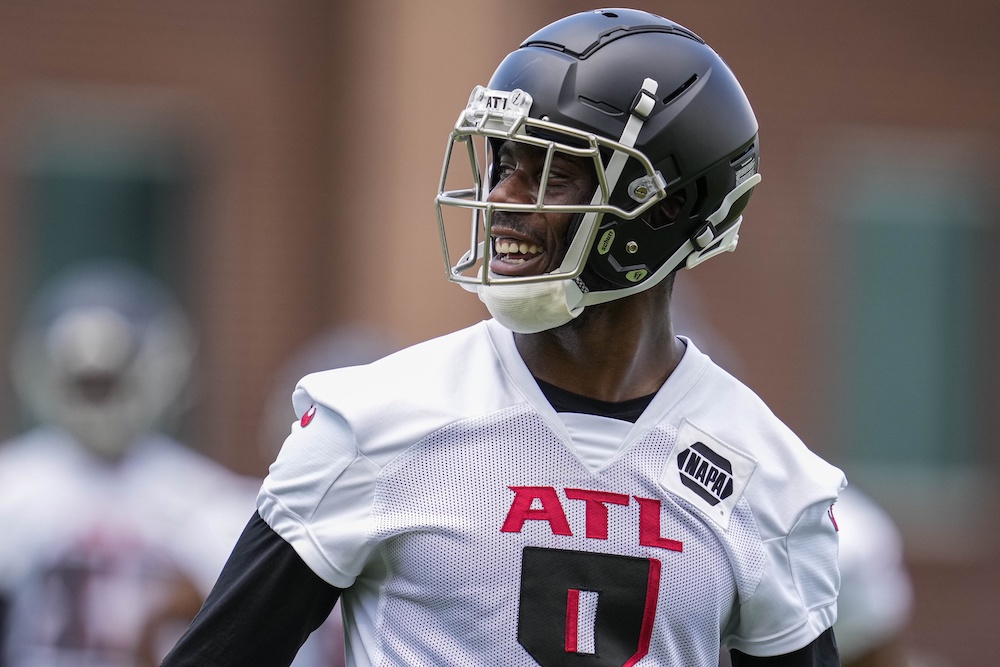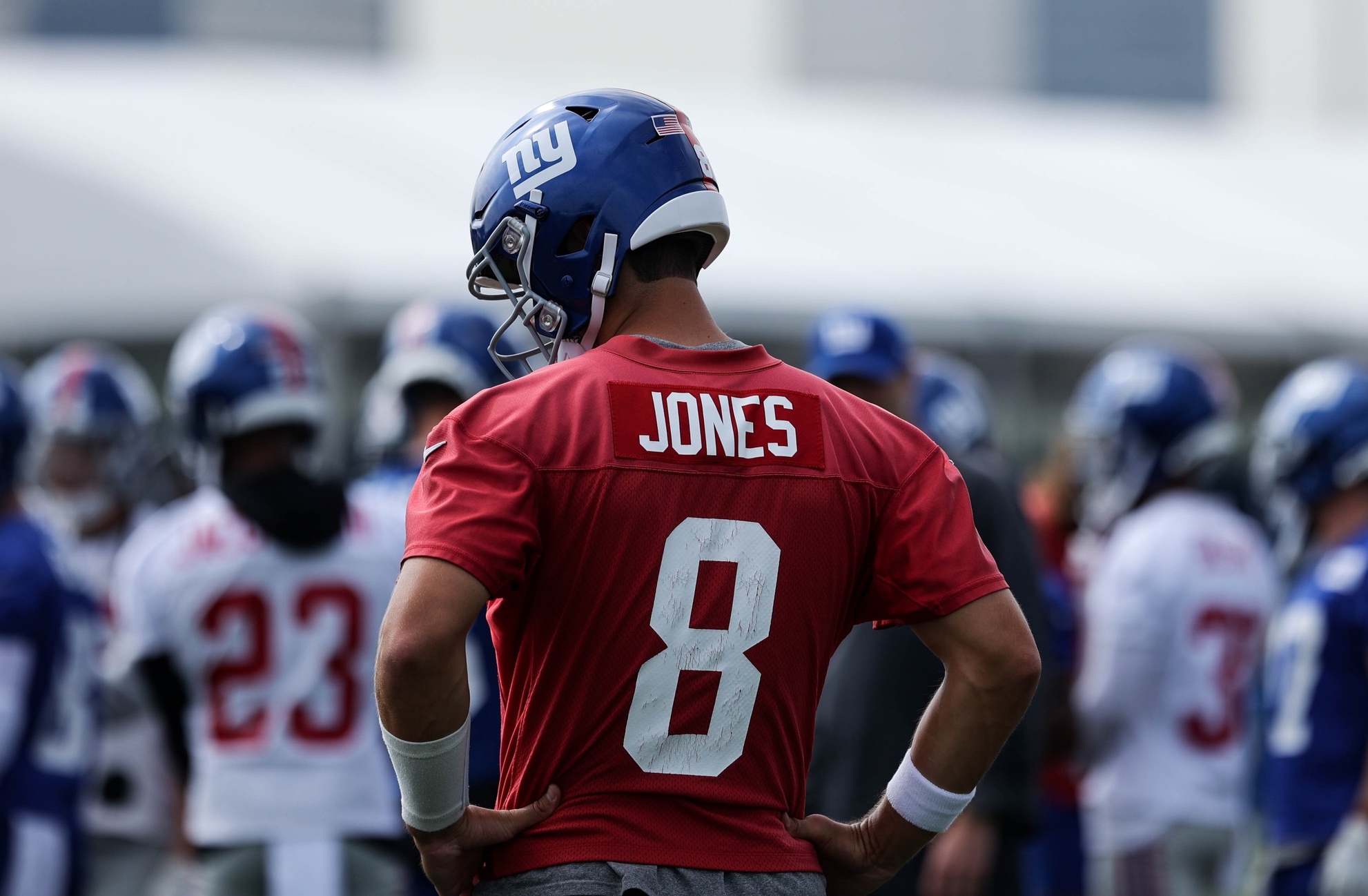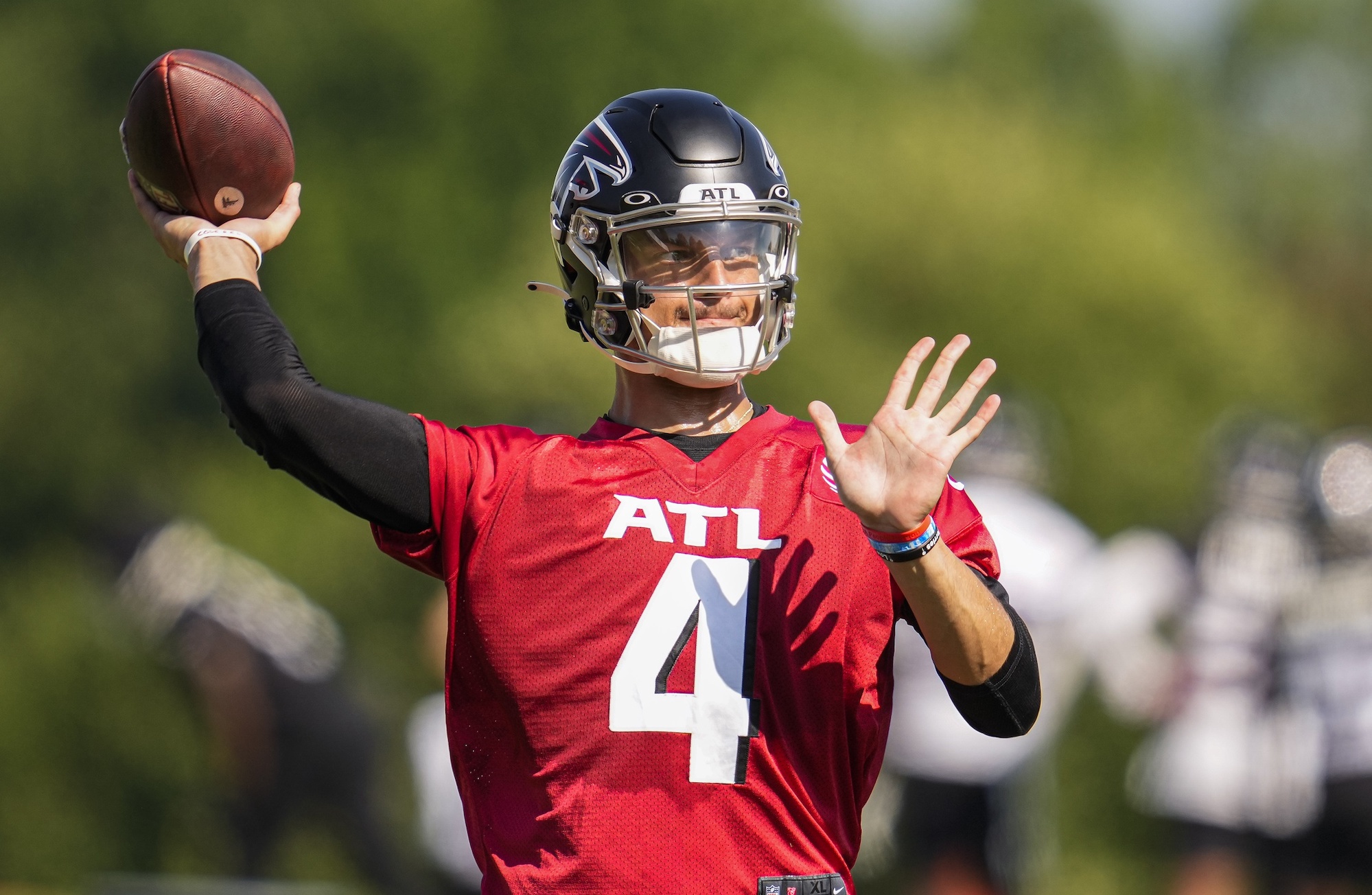Rookie tight ends typically don’t make much of a fantasy impact. Luckily, Kyle Pitts is no ordinary tight end. His production in year one led to some happy fantasy managers, which included this impressive line of stats among tight ends in 2021:
- Sixth-most PPR points
- Fourth-most targets per game
- Seven weeks as a TE1
Those lined up with my predictions for Pitts from my article on him before last season, so let’s take a look at what Pitts can do for your fantasy team this season.
Here’s how we’ll break it down.
- What Pitts has done
- How Pitts fits in Atlanta’s offense
- How Pitts compares to other top tight ends
- How to value Pitts
How Pitts Fits in Atlanta’s Offense
Past success is a great potential indicator for future success — the keyword being “potential.” Just because Pitts posted those numbers doesn’t mean he’s a lock for replicating them. In fact, Pitts arguably has more competition for work this season than he did last season. While the Falcons let Russell Gage walk, they also drafted Drake London with the eighth pick in the 2022 NFL Draft.
In the 12 weeks following wide receiver Calvin Ridley’s absence, Gage averaged about one more target than Pitts. On the surface, swapping Gage with London may not seem like it’ll have huge ramifications for Pitts’ fantasy value — and it won’t. But coupled with the adjustments Atlanta may make to their offense, London’s addition doesn’t help Pitts. The 6-foot-4 London wins in similar ways to the 6-foot-6 Pitts, despite London weighing nearly 40 pounds lighter than Pitts. Pitts is no longer the main big-body target in Atlanta. Fortunately for Pitts, his skillset allows him to be used in multiple ways. So don’t expect London to completely eradicate Pitts’ opportunities. Just don’t expect it to help Pitts, either.
Cordarrelle Patterson should also retain his running back/wide receiver hybrid role, since Atlanta didn’t make any other major investments in those positions. Who knows, maybe Bryan Edwards finally becomes the player some fantasy analysts hoped he could be? I doubt it. Even if Patterson and Edwards carve out sizable roles, Pitts should easily be the more involved player.
As I said, though, the dip in Pitts’ upside comes from the Falcons’ offense without quarterback Matt Ryan. Atlanta replaced their veteran pocket passer with Marcus Mariota, who offers much more mobility and far less certainty. We should assume Head Coach Arthur Smith will run an offense similar to the one he and Mariota were familiar with during their time under Head Coach Mike Vrabel in Tennessee (Smith was with the Titans since before they drafted Mariota in 2015, but Smith’s first season as offensive coordinator was Mariota’s last season with the Titans).
Barring a change in personnel, teams typically don’t stray too far from their pass attempts from the previous season. Well, Atlanta went from a big-armed pocket passer to a dual-threat passer. While Mariota certainly doesn’t have — as the kids say — a noodle arm, it’d be foolish for Smith to overlook Mariota’s capabilities as a runner. Essentially, don’t expect the Falcons to match their eighth-highest pass rates from 2021 in 2022. Instead, we should expect a regression to the mean. The average NFL team passed the ball 58% of the time, whereas the Falcons passed on 61% of their plays. Yet, they were only 19th in pass attempts. Translation: Atlanta ran a slow offense. That checks out since they ran the second-fewest plays among all teams.
So what the heck does that mean for Pitts? The Falcons will have to up the tempo. Otherwise, more run plays will mean fewer targets for him. It caps his upside as the potential ‘TE1’ in fantasy, which brings us to…
How Pitts Compares to Other Top Tight Ends
While Pitts’ situation in Atlanta didn’t get better, his situation among the top fantasy tight ends didn’t get worse. In fact, it may have gotten better. Pitts’ ADP (Average Draft Position) places him behind Travis Kelce and Mark Andrews and ahead of George Kittle and Darren Waller, per FantasyPros. Kelce and Andrews are rightfully in a class of their own; they’re proven top scorers at the position.
As for Kittle and Waller, they’ve each finished as top-three tight ends twice in the last three seasons. And they’ve been treated as such. When healthy, Kittle and Waller were top-three in targets per game over the course of those three years. Based purely on stats, the two veterans should be valued over Pitts.
But that’s not how football works. Pitts, 21, has a far more enticing potential career trajectory than Kittle, 28, and Waller, 29. Therefore, it’s reasonable to assume Pitts will take a step forward while Kittle and Waller don’t. Health is a concern, too. Kittle struggled with injuries last season despite only missing four games, and Waller missed seven games. Those concerns don’t exist with Pitts.
So how do the three stack up? The only factor holding Kittle back is his injury history. He’s proven to be a safe option when healthy, but FantasyPros shows Kittle is on average the 42nd player drafted. That value is fine for a tight end of his stature, though don’t reach on Kittle due to his injury history. As for Waller, he and Pitts share a similar physical archetype as bigger-bodied wide receivers rather than your typical tight end. However, Pitts has a greater chance of being his team’s top target. Waller has to compete with Davante Adams for that honor. Hunter Renfrow will almost assuredly still hold a special place in Derek Carr’s heart, too.
When You Should Draft Pitts
Finding the right value is a tricky game. It’s far better advice for me to tell you when to draft him relative of the position rather than the round. For example, Pitts has a late third-round value in 12-team PPR leagues, but if only one tight end is off the board then, you can afford to wait on Pitts. Conversely, if two tight ends are gone by the middle of round two, keep a close eye on how the board shakes out. Pitts is a much better option than the next tier of tight ends, which features Dalton Schultz, Dallas Goedert and T.J. Hockenson.
If you don’t feel great about the next tier of tight ends, you should target Pitts over Kittle and Waller, just not by much. Pitts’ upside comes from his enticing athletic profile and – as we discussed today – a perceived lack of competition that’s a bit over-exaggerated.
I can’t see him putting up numbers like Kelce or Andrews, but the lack of top-end talent at the position makes Pitts a very safe bet to be a top-five fantasy tight end. He should be drafted as such, just don’t reach for him. He’s a great selection as your fourth player and a solid selection as your third player.
Filed In
Related Articles
NFL & CFB Betting
Who Will Have Worst Record In NFL In 2022?
- Aug 17, 2022
NFL
3 Things We Want To See From Desmond Ridder In Preseason Debut
- Aug 12, 2022
Written By



































